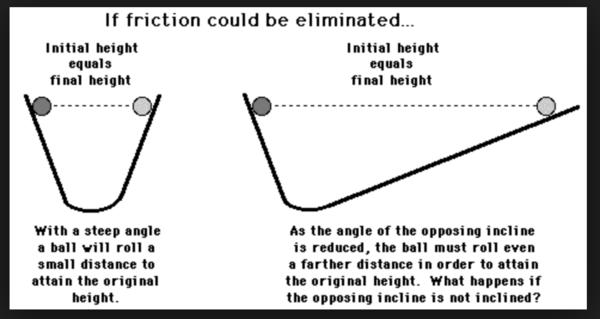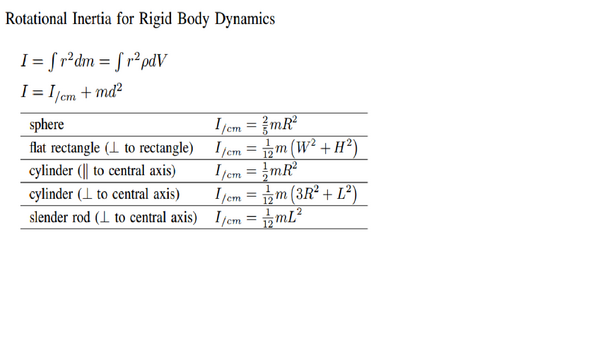Inertia
Claimed by Dev Mandavia
In kinematics, momentum and inertia, while similar, are very different entities. Momentum usually refers to mass that is undergoing translational motion and is defined as the mass multiplied by the mass's corresponding velocity component. Inertia is the resistance to changes in the motion or projected motion of a specified body of mass. It can exist in terms of a standard moment of inertia or a rotational moment of inertia, which is the resistance to changes in the rotation or projected rotation of a specified body of mass.
The Main Idea
The motivation behind the quantifiable term known as inertia is to have the ability to study and predict the motion of systems of specified mass in terms of torsion, translation, and deformation.
History
Before the Renaissance period, the theory of motion that reigned was garnered by Aristotle who claimed that "in the absence of external motive power, all objects [on Earth] would come to rest and moving objects would only continue to move so long as there is power inducing them to do so."[1]
Galileo performed an experiment with two ramps and a bronze ball. To begin, the two were set up at the same angle. Galileo observed that if a ball was released at one height, it would roll to the same height at which the ball was released. He then experimented with altering the angle of the second ramp. He concluded that even though it may take longer, when the angle is smaller, the ball will still roll up to the same height. Because the height was conserved, Galileo believed that if a ball was rolled from a ramp to a flat surface, it would stay in motion unless a force stopped it.
Newton delved deeper on past assertions regarding laws of motion with his concept that objects in motion tend to stay in motion unless acted on by an external force; some examples for external forces in the real world are: gravity, friction, contact, etc. This definition remained unchanged event in Einstein's theory of special relativity as proposed during the 20th century.
Calculating Inertia
The formula for the standard moment of inertia, typically denoted as I, depends on what the particular statically determinate object is as well as its rotational axis.
Calculating the polar moment of inertia, typically denoted as J, depends on what the deformable body is and also depends on the rotational axis; the cross sectional area, distance from the center of mass, and projected deformation are also key components.
Examples
Basic Inertia
Inertia, or momentum, of an object is calculated by multiplying the velocity by the mass.
For example, a car that weighs 3000 kilograms is moving at a velocity of 26 meters per second. What is the inertia of the car?
- To solve this, one must use [math]\displaystyle{ \vec{p} = m*\vec{v} }[/math]
- m = 3000kg and v = 26[math]\displaystyle{ {\frac{m}{s}} }[/math]
- [math]\displaystyle{ \vec{p} = 3000*26 = 78000 Ns }[/math]
Moment of Inertia
A disc of mass 1 kg is rotating and has a radius of .1 meter. What is the moment of inertia of the disc?
- The formula for the moment of inertia of a disc is [math]\displaystyle{ {\frac{1}{2}}mr^2 }[/math]
- m = 1 kg and r = .1 m
- [math]\displaystyle{ {\frac{1}{2}}(1)*(.1)^2 = 0.005 kg*m^2 }[/math]
Relationship to Modern Day Life
Anything in life involving motion is inertia, whether it is you walking, riding a scooter, or running. A ball's motion or lack of motion is inertia as well. An everyday example of inertia would be a car in motion. As a car accelerates and attains a higher velocity, the amount of momentum of the vehicle increases. A higher inertia makes it more difficult for a car to brake quickly and come to a halt in an emergency scenario.
See also
Newton's Laws and Linear Momentum



